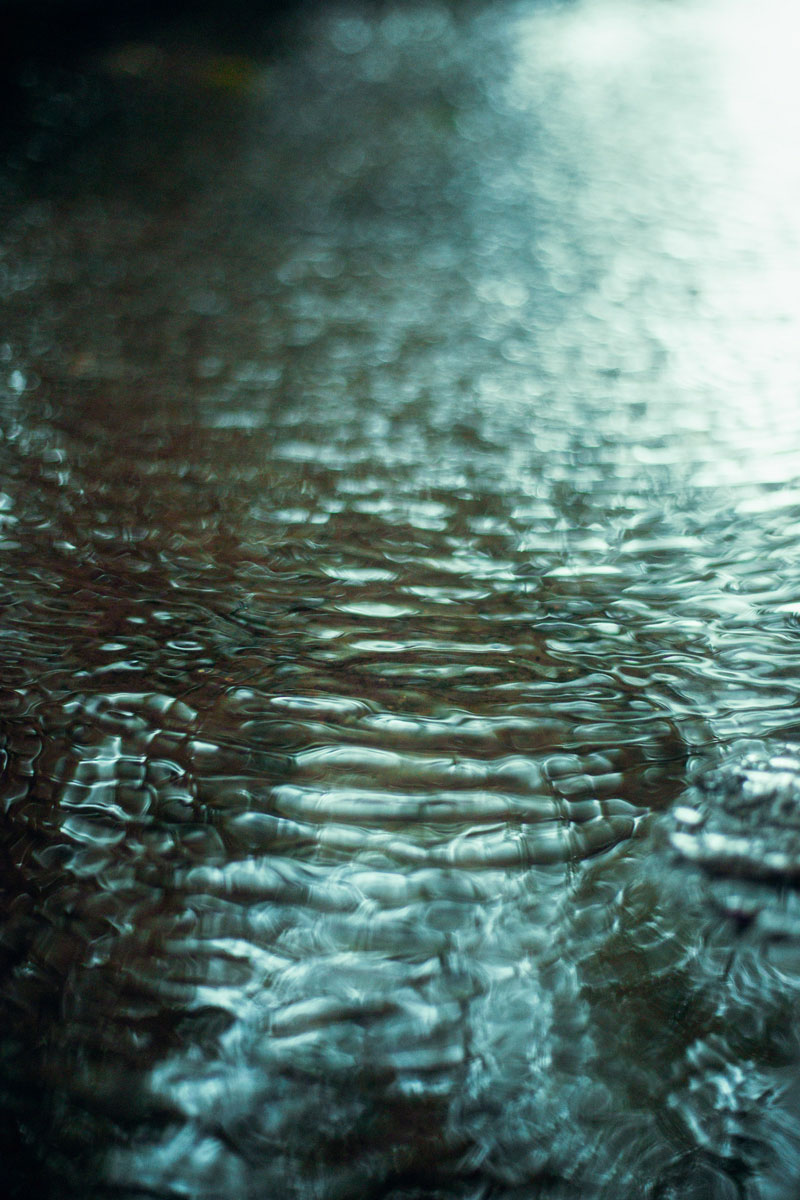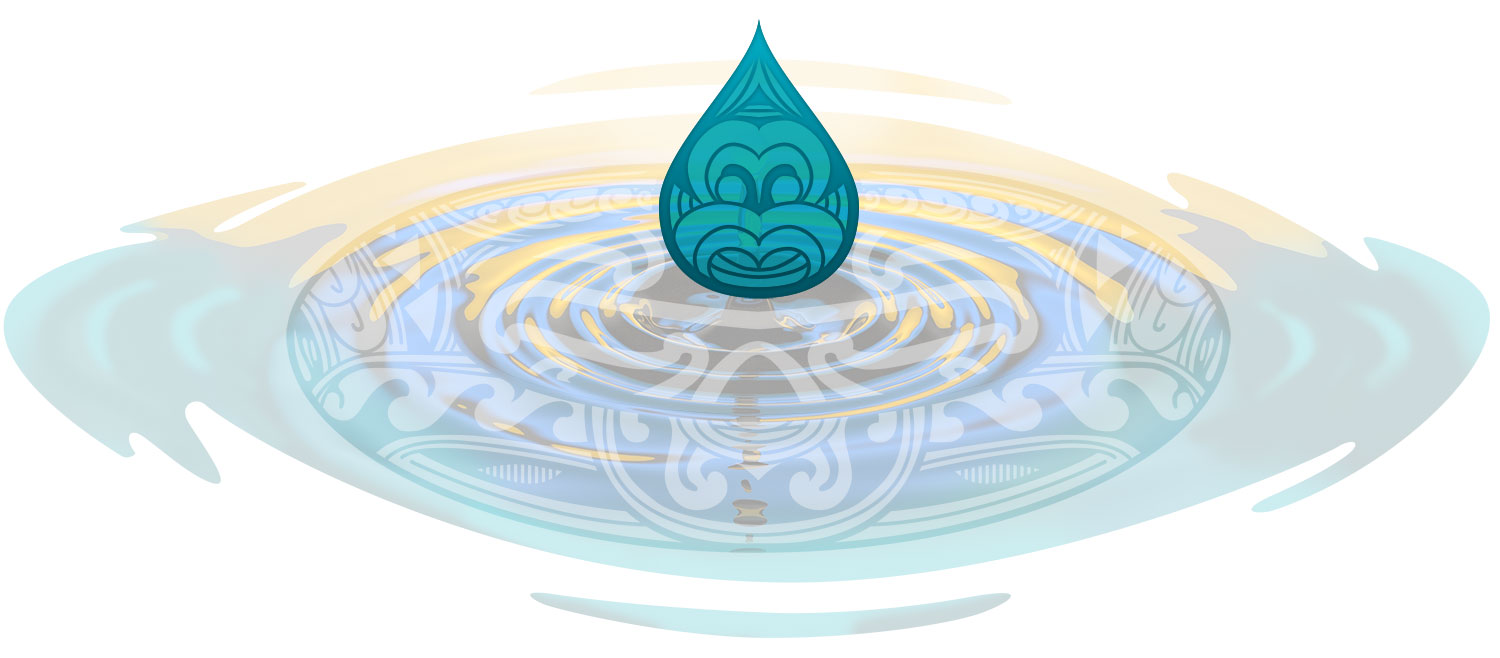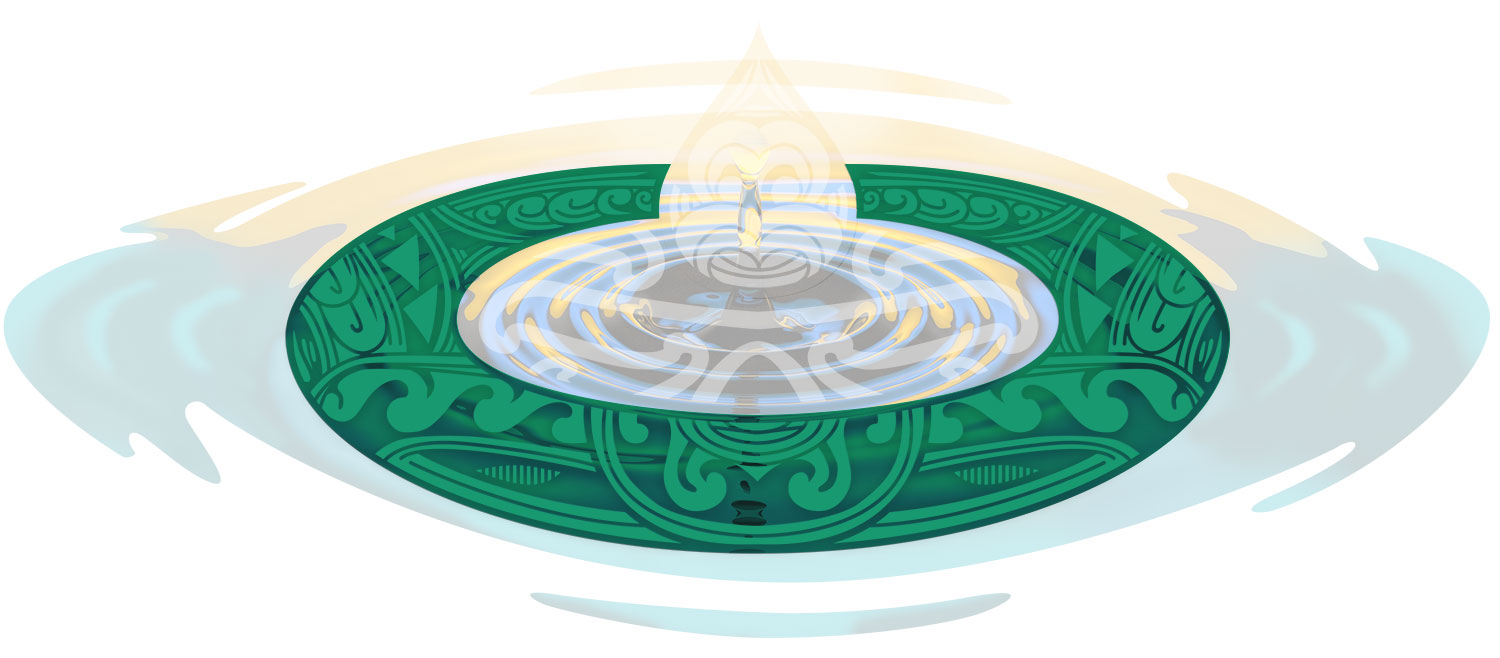Māori connection with Tangaroa (god of the sea) is deeply spiritual and metaphysical with the sea often considered to be the source and foundation of all life. While Tangaroa is viewed as the source of life, it can also be destructive and the cause of death and havoc. Sadly this is evident incurrent preventable drowning statistics where Māori are over represented.With water and the sea figuring prominently from a Māori world view, respect and understanding of Tangaroa and what Tangaroa is capable of, and water safety skills training is paramount for wellbeing and survival in, on and around the water.
The Wai Puna model draws on three core pillars: Whakapapa, (the first drop or mātāpuna, the source), Mātauranga (the inner ripple or tūpuna, the traditional knowledge) and Tikanga (the outer ripple, or mokopuna, representing engagement), as they pertain to wai.
Read more about Wai Puna

The source of water safety knowledge. Whakapapa is depicted in the koruru kaitiaki pattern (carved face), a representation of atua, and their importance for understanding our spiritual connection to wai (water).
.jpg)
The deepening of water safety knowledge. Mātauranga stems from whakapapa and is symbolised by the whakairo (carving) pattern known as puhoro – traditional knowledge. Tūpuna or ancestors are the caretakers of traditional knowledge.

The application of water safety knowledge.The last puna (mokopuna) is tikanga. The whakairo patterns within this outer ripple represent the various ways Māori engage with the water such as depicting waka sails for voyaging, fish scales (mahinga kai) and waves (recreation).